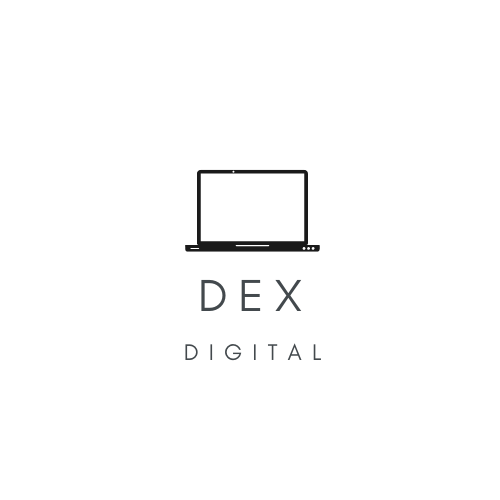
What Is the Currency of Prague?
Prague, the capital city of the Czech Republic, has its own currency called the Czech Koruna (CZK). Understanding the basics of Prague’s currency is essential for both tourists and locals alike. In this article, we will delve into the history, current usage, role in the economy, exchange rates, future prospects, and practical tips for handling money in Prague.
Understanding the Basics of Prague’s Currency
The History of Prague’s Currency
Prague has a rich history when it comes to currency. Prior to the adoption of the Czech Koruna, various foreign currencies like the Austrian and Hungarian currencies were in use. However, after the establishment of Czechoslovakia in 1918, Prague introduced its own currency, the Czechoslovak Koruna, which later evolved into the Czech Koruna after the country’s peaceful separation in 1993.
Since then, the Czech Koruna has become the official currency of the Czech Republic, including Prague, and is regulated by the Czech National Bank.
Delving deeper into the history of Prague’s currency, it’s fascinating to note that during the time of the Austro-Hungarian Empire, the city of Prague was a significant economic hub, leading to a diverse range of currencies being used in daily transactions. This historical context sheds light on the evolution of Prague’s monetary system and its transition towards a more unified and stable currency under Czechoslovakia’s influence.
Current Currency in Use
The Czech Koruna is the sole legal tender in Prague. It is represented by the symbol “Kč” and is available in both coins and banknotes. The coins denominations range from 1 to 50 Kč, while the banknotes are issued in values of 100, 200, 500, 1000, 2000, and 5000 Kč. It’s important to note that while some businesses in Prague accept euros, it’s advisable to use the local currency to avoid potential issues with exchange rates.
Furthermore, the design of the Czech Koruna banknotes reflects the country’s rich cultural heritage, featuring prominent figures from Czech history, renowned landmarks like Prague Castle, and intricate artistic motifs. This attention to detail not only adds a touch of national pride to the currency but also serves as a reminder of the deep-rooted traditions and values that shape the Czech Republic’s identity.
The Role of the Czech Koruna in Prague’s Economy
The Value of the Czech Koruna
The value of the Czech Koruna is a topic of great significance in Prague’s economic landscape. As a sovereign currency, the Czech Koruna’s value is subject to fluctuations influenced by a myriad of factors. These include the country’s economic performance, inflation rates, political stability, and global market conditions. The Czech National Bank, as the central monetary authority, plays a pivotal role in maintaining stability and managing the currency’s value through strategic monetary policies and interventions in the foreign exchange market.
Furthermore, the Czech Koruna’s value not only impacts the purchasing power of local residents but also plays a crucial role in shaping the competitiveness of Czech exports and imports in the global market. A strong Koruna can make imported goods more affordable for consumers but may hinder the export competitiveness of Czech products, while a weaker Koruna can boost exports but lead to higher prices for imported goods.
The current exchange rate of the Czech Koruna against major global currencies such as the Euro and the US Dollar can be easily checked at authorized exchange offices, banks, or through online currency converters, providing both residents and visitors with real-time information to make informed financial decisions.
How the Czech Koruna is Used in Daily Transactions
In the bustling streets of Prague, the Czech Koruna reigns supreme as the primary medium of exchange for daily transactions. From savoring traditional Czech cuisine in quaint restaurants to exploring the vibrant local markets brimming with artisanal crafts, cash remains king in most establishments across the city.
While cash is widely accepted, especially in smaller businesses and local markets, it’s worth noting that larger establishments, upscale restaurants, and tourist-oriented businesses in Prague also embrace the convenience of electronic payments. Credit cards are commonly accepted in these establishments, offering visitors the flexibility to choose their preferred payment method. To navigate the diverse payment landscape in Prague seamlessly, it’s advisable for visitors to carry a mix of cash and cards to cater to various payment preferences.
When engaging in transactions in Prague, visitors may encounter a charming local custom of rounding off the total amount to the nearest whole koruna. For instance, if the bill amounts to 98.50 Kč, it is customary to pay 100 Kč, reflecting a cultural practice that simplifies transactions and showcases the warmth and hospitality of the Czech people.
Exchange Rates and Prague’s Currency
Determining the Exchange Rate
Understanding exchange rates is crucial when dealing with foreign currency. In Prague, exchange rates can vary between different businesses and locations. It’s advisable to research before exchanging your currency to get the best rates. Authorized exchange offices, banks, and ATMs are popular options for currency exchange.
Be wary of potential scams or places offering exceptionally favorable rates, as they may have hidden fees or unfavorable terms.
When exchanging currency in Prague, it’s essential to consider the timing of your exchange. Exchange rates fluctuate daily based on various factors such as market demand, economic indicators, and geopolitical events. Keeping an eye on these factors can help you make informed decisions and maximize the value of your currency exchange.
How Exchange Rates Impact Prague’s Economy
Exchange rates can have a significant impact on Prague’s economy, particularly in the tourism sector. A favorable exchange rate can attract more international visitors, leading to increased revenue and economic growth. On the other hand, unfavorable exchange rates may discourage tourism and impact businesses reliant on foreign visitors.
The Czech National Bank actively monitors and manages exchange rates to maintain stability and support the country’s economy.
Moreover, exchange rates also play a crucial role in foreign trade. A weaker local currency can make exports more competitive in the global market, boosting the country’s export industry. Conversely, a strong local currency may increase the cost of imports, affecting domestic prices and consumer purchasing power.
The Future of Prague’s Currency
Potential Changes to Prague’s Currency
While there are no imminent plans to change Prague’s currency, like any other currency, the Czech Koruna’s future is subject to various factors. Economic developments, global financial trends, and potential integration within the European Union may influence the currency’s future.
However, any significant changes in Prague’s currency would likely involve extensive discussions, assessments, and public opinions before implementation.
Considering the rich history and cultural significance of the Czech Koruna, any potential changes to Prague’s currency would be met with both excitement and apprehension by the local population. The currency, adorned with intricate designs and historical figures, serves as a symbol of national pride and heritage.
The Impact of Digital Currency in Prague
As digitization continues to shape the financial landscape, Prague could also experience the impact of digital currency. While digital payment options are widely available and accepted in Prague, the adoption of cryptocurrencies or a fully digitalized currency system is yet to be seen.
As with many cities worldwide, the advancing technology and changing consumer preferences will shape the future of digital currency in Prague. The potential integration of blockchain technology in Prague’s financial sector could revolutionize the way transactions are conducted, offering increased security and transparency to users.
Tips for Tourists: Handling Money in Prague
Where to Exchange Currency in Prague
When visiting Prague, it’s advisable to exchange your currency to the Czech Koruna to ensure smooth transactions. Authorized exchange offices and banks are the most reliable options, as they offer competitive rates and transparent transactions. Avoid exchanging money at unofficial or unlicensed establishments to minimize the risk of fraud or unfavorable rates.
Prague, the capital city of the Czech Republic, has a rich history dating back over a thousand years. The Czech Koruna has been the official currency since 1993, following the dissolution of Czechoslovakia. The currency is issued and regulated by the Czech National Bank, ensuring its stability and reliability for both locals and tourists.
Using Credit Cards and Digital Payments in Prague
Prague is a modern city with a wide acceptance of credit cards and digital payments. Major credit cards, such as Visa and Mastercard, are widely accepted in most establishments, including hotels, restaurants, and shops.
It’s worth noting that some smaller establishments or local vendors may prefer cash payments, so it’s always helpful to carry a reasonable amount of cash for convenience.
With the knowledge of Prague’s currency, its history, current usage, role in the economy, exchange rates, future prospects, and practical tips for handling money, you can now confidently navigate the financial landscape of Prague during your visit.
Exploring Prague’s financial infrastructure can also provide insights into the country’s economic development and monetary policies. The Czech Republic has seen steady economic growth in recent years, with Prague serving as a hub for business and tourism. Understanding how money flows in this vibrant city can enhance your overall travel experience and appreciation of its cultural and financial significance.






